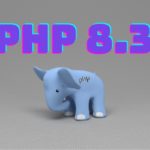The cloud has been a mainstream facet of web development for some time now, yet it’s also an area in which not every professional is totally up to speed.
If you fall into this camp, here are some reasons why you should be proactive about changing things this year.
Embracing cloud architecture for streamlined development
One major selling point of adopting a cloud architecture as part of your development workflow is that it helps to catalyze and simplify a cavalcade of core processes.
Developers can tap into:
- Scalable resources.
- Automated backups.
- Rapid deployment.
The idea is to get you to your intended destination faster, and with more control. The flexibility is perfect for those iterative changes during agile development sprints. That’s why organizations now prefer cloud-based systems over traditional servers.
If you and your team are not yet totally comfortable with transitioning to the cloud, taking online cloud courses for all levels will give you the skills you need to simplify this process.
Prioritizing security literacy to safeguard projects
The cloud market is growing 21.2% annually, yet with rapid adoption comes the risk of exploitation. That’s why security concerns are often a sticking point for out-of-the-loop developers. But with knowledge, they can make informed decisions that protect data and applications.
With adequate cloud literacy comes a solid understanding of:
- Identity and access management.
- Data encryption techniques.
- Network security configurations.
These tools ensure your projects remain secure against potential threats. And by leveraging shared responsibility models with providers like AWS or Azure, you can effectively delegate some tasks while focusing on unique vulnerabilities in your systems.
Staying current with best practices through webinars or community forums means you’ll stay ahead of emerging risks. After all, no developer wants their project compromised due to preventable oversight. So becoming cloud literate enhances not just efficiency but also safety for digital environments.
Utilizing multi-cloud for enhanced project agility
Why lock yourself into one cloud provider when you can play the field? Adopting a multi-cloud strategy lets developers benefit from unparalleled agility and resilience.
Advantages include:
- Flexibility in choosing best-of-breed services.
- Risk reduction by avoiding vendor lock-in.
- Increased redundancy to improve uptime.
Embracing multiple providers means cherry-picking features that suit specific project needs. For example, use Google Cloud’s AI capabilities while relying on AWS for cloud storage solutions.
A multi-cloud approach also mitigates downtime risks because workloads can shift between environments seamlessly. It’s an effective way to adapt quickly if one service encounters issues or unexpectedly changes its pricing model.
Therefore, understanding and utilizing this setup amplifies both creativity and reliability in development projects.
Mastering containers and Kubernetes for efficiency gains
Containers and Kubernetes are an efficient solution to deploy, scale, and manage applications seamlessly. In fact 45% of container platforms are now powered by public cloud solutions, so there’s a major overlap here.
Key benefits include:
- Consistent environments from development to production.
- Faster iteration cycles.
- Resource optimization through automated orchestration.
Containers ensure your apps run consistently across different platforms without worrying about dependencies. Meanwhile, Kubernetes is a means of monitoring workloads and managing resources effectively.
With cloud-native trends on the rise, mastering these technologies empowers developers to improve their workflows.
Plus, being familiar with tools like Docker or OpenShift enhances employability as companies shift towards microservices architectures. So if efficiency is what you’re after (and let’s be real – who isn’t?), brushing up on containerization is worth every minute spent learning it.
The bottom line
As you can see, cloud literacy leaves developers more effective, productive and employable. So if you’ve got the time and the opportunity to learn more about what it can offer, 2024 is the year to take the initiative.











Leave a Reply